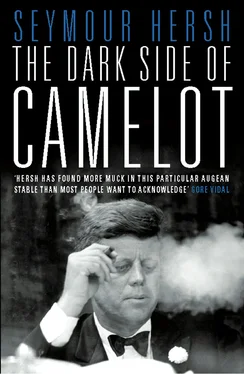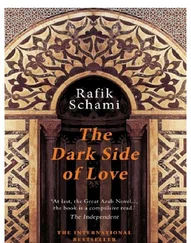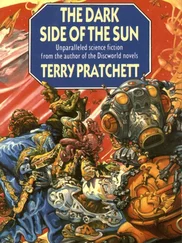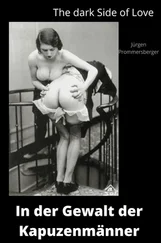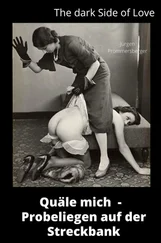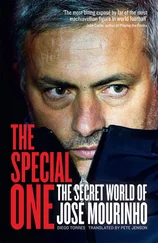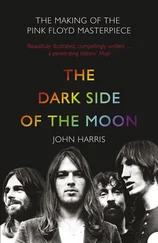Clark did as instructed, but not without regret. “If the Star , a highly respected paper, had gone public with the [Kater] story,” he said, “it could have blown Kennedy out of the water. There never would have been a President Kennedy. Today, with the same information, any of fifty newspapers would have gone after the story.”
No responsible journalist touched the story. According to her FBI file, the outraged Kater carried her protest and her placard to the Democratic convention, and spent the final weeks of the 1960 campaign marching in front of the White House. She was not only ignored, as usual, by the press but also urged by passersby to go back “to the nuthouse.” After his election Kennedy showed his disdain for Kater by appointing Pamela Turnure press secretary to his wife.
Kater, remarkably, picketed in front of the White House after Kennedy’s inaugural, to no avail, and continued to send a stream of well-written protest letters to public officials and newspapers about the president’s lack of morality, also to no avail. In one such letter, she wrote:
In 1960 the vast, vast majority of American women were hoaxed by the press, by television and by many influential people into believing that John Kennedy was the same clean-living man they read about or listened to on the air. That wasn’t just everyday political cynicism; it was a brutal combination of power that could and did enforce total censorship of the truth about John Kennedy’s well-known lecheries and his penchant to ruin anyone who dared criticize him for them. And I went out, all alone, to fight it with my little windbattered sign! But, far from being a fool, I was the one woman in America who wasn’t fooled by John Kennedy.
The obsessed Georgetown housewife was a campaign-damaging bomb that did not explode. There were others, equally dangerous.
Senator Kennedy’s scramble to protect his future presidential reputation began in earnest in late 1959, when a political opponent discovered that he was carrying on an affair with a nineteen-year-old student, the woman interviewed in Chapter Two. She was studying at Radcliffe College, the woman’s college of Harvard University, on whose board of overseers Kennedy then served. His indiscretion was known to many: Kennedy’s car and driver had been seen picking up and dropping off the student at her dormitory.
In this instance, Kennedy’s biggest worries came not from Republicans but from his fellow Democrats, who were eager to find ways to discredit their competition. Word of the liaison reached Charles W. Engelhard, a South African diamond merchant and investor with corporate offices in New Jersey. Engelhard had endorsed Robert B. Meyner, the Democratic governor of New Jersey, who had presidential ambitions of his own; he and Meyner could not resist a chance to get rid of Kennedy. The two men arranged for one of Engelhard’s aides to approach a former New York City policeman, then a private investigator, and offer him $10,000 to fly to Boston and take incriminating photographs of Kennedy with the Radcliffe student. However, the former policeman was a staunch Kennedy supporter. He turned down the job and, through a mutual friend, brought the plan to the attention of a politically connected Democratic lawyer in Washington. The lawyer, who had spent many years as a Senate aide, immediately arranged to see Jack Kennedy.
“Evelyn Lincoln shows me in,” the lawyer, who did not wish to be identified, recalled in a 1996 interview for this book, “and I show him the name of the girl. He says, ‘My God! They got her name.’ He started to explain—some bullshit—and I said, ‘I’m not really interested. I just wanted to let you know.’ He was so appreciative that I’d tipped him off.”
It was clear, the lawyer said, that “Charley Engelhard was trying to get the goods on Kennedy to knock him out of the running. They were going to set him up.” Senator Kennedy, in the meeting, had exclaimed, “That goddamned Charley Engelhard. I’m going to give it to him up to there”—drawing his hand across his neck. Changing the subject, the lawyer asked Kennedy what he could do to help him win the Democratic nomination. He vividly recalled the answer: “I need money. I can’t ask my father to pay for everything. Raise money.”
Months later, during the campaign, the lawyer bumped into Kennedy and was thanked anew for his timely information. Kennedy told the lawyer he had assigned Carmine Bellino, one of his longtime assistants, to find out what was going on. Bellino, he said, had “put in a wire” on the Engelhard Industries official who had tried to hire the former New York City policeman. The lawyer raised an objection to the use of wiretaps and Kennedy reassured him, explaining, “We’re not tapping his phone—just recording who he called.”
In a meeting with the lawyer after the election, Kennedy reported that he was being urged by many ranking Democrat members of the Senate to name Engelhard ambassador to a high-profile embassy. “I’m going to fuck him,” Kennedy said, with a laugh. “I’m going to send him to one of the boogie republics in Central Africa.” Engelhard, who died in 1971 one of the world’s richest men, never got his embassy, but the Kennedy administration did name him as the American representative to the Independence Day ceremonies in Gabon and Zambia. Kennedy, as we have seen, continued his relationship with the student. After his inauguration, he arranged for her to be named a special assistant to McGeorge Bundy, who had been dean of faculty at Harvard. She remained on Bundy’s White House staff until late 1962. “It was very embarrassing,” the woman recalled in one of our interviews. “It put McGeorge in a very creepy situation.”
The fourth woman, and the one who, in the spring of 1960, posed the most direct threat to Kennedy’s presidential aspirations, was a self-proclaimed artist named Barbara Maria Kopszynska, who had emigrated with her mother from Poland to Boston as a displaced person after World War II. According to heavily censored FBI files made public under the Freedom of Information Act in 1977, Kopszynska began telling reporters after the 1960 election that in 1951 she had become engaged to marry Jack Kennedy, then a member of the House, only to have the engagement broken up by Joe Kennedy because she was half Jewish. In March 1957 the blond and beautiful Kopszynska, who had changed her name to Alicia Darr, married Edmund Purdom, a British actor and playboy, and moved to Rome with him. The marriage quickly fell apart, and by early 1960 the Purdoms were in an Italian state court filing charges against each other.
Alicia Darr’s FBI file created a brief stir when it was released in 1977. It included a summary of an interview in the issue dated January 31, 1961, of Le Ore , an Italian weekly magazine, in which Darr described her early relationship with Jack Kennedy and declared, according to a translation made for this book, that she “could have been the first lady.” The FBI attaché in Rome told J. Edgar Hoover on January 30, ten days after Kennedy took office, that the article indicated that Darr “was considering the release of further information.” The U.S. media paid no attention to the interview in 1961.
But a second FBI document in Darr’s file, dated June 4, 1963, and sent at that time to Bobby Kennedy by J. Edgar Hoover (as the Le Ore summary had been two years earlier), made headlines in 1977, when America’s newspapers, no longer in awe of the presidency after Watergate, were eager to publish any account of Kennedy’s womanizing. Hoover warned the attorney general that the president’s name had come up in connection with a disciplinary proceeding in New York against two Darr attorneys, Simon Metrik and Jacob W. Friedman. Metrik and Friedman, Hoover reported, had filed documents in court describing Kennedy’s relationship with Darr and claiming that “just prior to the President’s assuming office you”—Bobby Kennedy—“went to New York and arranged a settlement of the case out of court for $500,000.” Reporters found Darr, by 1977 remarried and living in the Bahamas, and she denied having received any money from the Kennedys. The Hoover memoranda, even though heavily censored when released, produced the kind of stories that, if they had been published during JFK’s days in office, would have seriously damaged his reputation and his chances for reelection. Most newspapers, citing the FBI documents, flatly reported that Kennedy had paid $500,000 to quash a lawsuit filed by Darr.
Читать дальше
